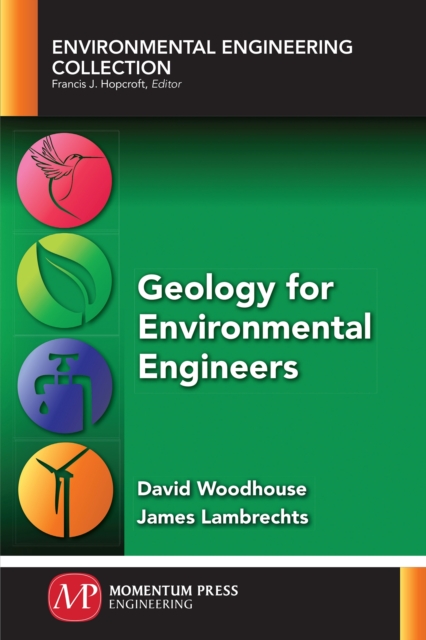
Geology for Environmental Engineers Paperback / softback
by David Woodhouse, James Lambrechts
Part of the Environmental Engineering Collection series
Paperback / softback
- Information
Description
The environmental field has evolved since its beginnings in 1970 with the creation of the US Environmental Protection Agency (EPA), and further with the 1980 passage of CERCLA legislation (Comprehensive Environmental Response, Compensation, and Liability Act), commonly known as Superfund.
Many site characterization studies and remediation designs have also evolved since that time.
In order for the Environmental Engineer to understand the behavior and design remediation of the chemicals and pollutants in the environment, knowledge of the principles and tenets of geology is critical. Geology means the study of the Earth and is the science that seeks to collect, correlate, and interpret facts concerning the Earth.
Its scope is almost boundless. The cycle that gives origin to the different types of rock and the geologic processes that produce the soils is discussed.
On a macro scale, it seeks to discover the origin of the Earth, of mountains, valleys, glaciers, rocks, volcanoes, and a myriad number of other phenomena.
Plate tectonics, continental drift, and subduction zones all played a role in the formation of our planet.
On the micro scale, geology seeks to understand fluid flow through small pores and fractures.
The fate and transport of chemicals through soils and especially through bedrock is a function of the geology.
The rock structure and its understanding of the geologic processes which produce fractures and allows fluid flow is a major factor in remediation design.
Information
-
Out of StockMore expected soonContact us for further information
- Format:Paperback / softback
- Pages:216 pages
- Publisher:Momentum Press
- Publication Date:17/10/2018
- Category:
- ISBN:9781947083325
Other Formats
- EPUB from £17.05
Information
-
Out of StockMore expected soonContact us for further information
- Format:Paperback / softback
- Pages:216 pages
- Publisher:Momentum Press
- Publication Date:17/10/2018
- Category:
- ISBN:9781947083325



